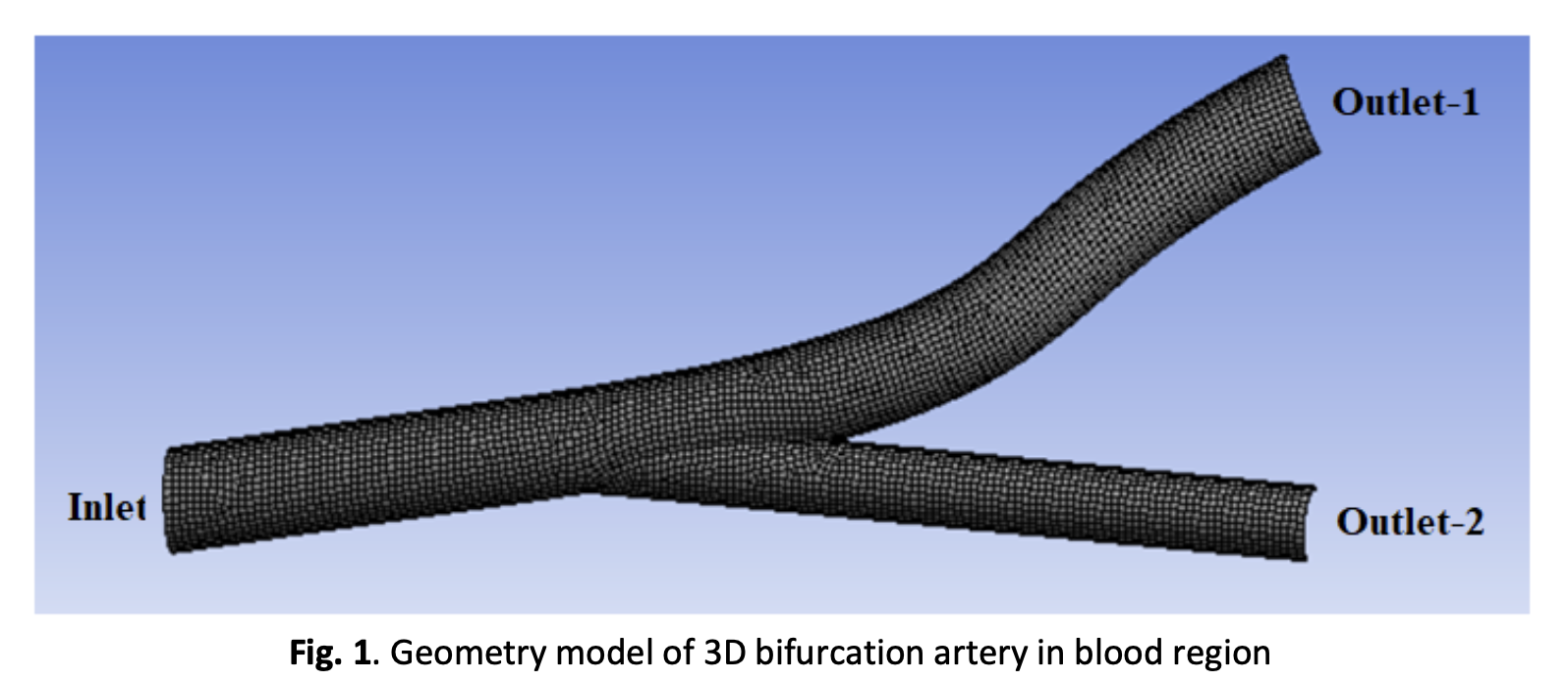Investigation of Two-Way Fluid-Structure Interaction of Blood Flow at Different Temperature using CFD
DOI:
https://doi.org/10.37934/araset.36.2.120130Keywords:
Pulsatile flow, Non-Newtonian fluid, Blood artery, Temperature, CFDAbstract
At this work, fluid-structure interaction was used to biomechanical challenges relating to blood flow in artery bifurcation to investigate potential solutions. The purpose of this study was to evaluate the influence that artery geometry has under constant flow, pulsatile flow, and varied blood temperatures. In this study, the flow of blood through the artery was simulated using a non-Newtonian fluid model, and the finite element technique was utilized to analyse the data. For the purpose of analysing the differences between pulsatile flow and steady flow, a user-defined function, or UDF, was developed as part of the suggested input velocity model. In order to accurately estimate the pressure distribution, velocity flow, wall shear stress, and wall deformation, a simulation called ANSYS 17.2 is used to model the fluid-structure interaction that occurs when blood flow is superimposed on an arterial wall. According to the findings, the pressure amplitude steadily increases in the artery zone for high temperatures, demonstrating that the projected pressure is 15% greater than it was when the temperature was low. This is in contrast to the low temperature, for which the predicted pressure was 15% lower. In addition, the area close to the apex has the highest levels of shear stress, which then drop down precipitously farther along the wall until they reach an almost constant level. In general, the location of maximum total deformation is shown at peak systole for the artery when the temperature is high. This is the location where the pressure is high, particularly at the artery bifurcation, and where there is a maximum wall deformation of 0.447 mm. In addition, this is the location where the maximum total deformation occurs. These findings are of great use in the design of arterial bifurcation as well as the assessment of recurrent mechanical loads, both of which contribute to the prediction of life.




























